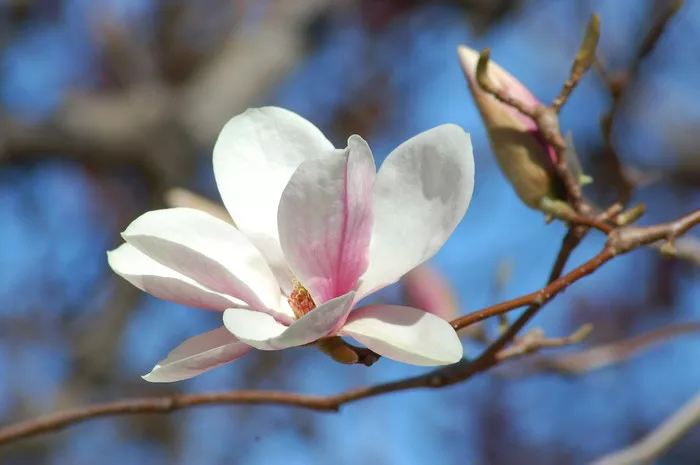Magnolia flowers, with their graceful petals and captivating fragrance, have enchanted gardeners and flower enthusiasts for centuries. These stunning blossoms, belonging to the Magnoliaceae family, come in various species, each with its unique charm. From the large, creamy blooms of the Southern Magnolia (Magnolia grandiflora) to the delicate pink hues of the Saucer Magnolia (Magnolia soulangeana), magnolias add a touch of elegance to any landscape or floral arrangement.
Preserving the beauty of magnolia flowers beyond their natural bloom period requires attention to detail and proper techniques. Various factors, including environmental conditions and handling methods, can significantly impact the preservation effect of magnolia flowers. In this article, we explore the essentials of preserving magnolia flowers, from understanding the factors affecting their longevity to implementing effective preservation methods and offering valuable tips for optimal results.
Factors Affecting the Preservation Effect of Magnolia Flowers
1. Time of Harvest: The timing of harvest plays a crucial role in the preservation of magnolia flowers. Ideally, flowers should be harvested in the morning when they are fully hydrated, and their petals are at their peak freshness. Avoid harvesting during hot midday temperatures, as this can cause wilting and reduce the flowers’ lifespan.
2. Environmental Conditions: Magnolia flowers are sensitive to environmental factors such as temperature, humidity, and light. To preserve their freshness, store them in a cool, dark place away from direct sunlight. Excessive heat and light can accelerate wilting and cause the petals to lose their vibrant color.
3. Handling and Transportation: Gentle handling is essential when harvesting and transporting magnolia flowers to prevent damage to delicate petals and stems. Use sharp, clean pruning shears to make clean cuts at an angle, minimizing damage to the stem tissue. Handle the flowers carefully to avoid bruising or crushing them, as this can hasten wilting.
4. Hydration: Proper hydration is critical for maintaining the freshness of magnolia flowers. Upon harvesting, immerse the stems in a container filled with lukewarm water to prevent air bubbles from entering the vascular system. Remove any foliage that will be submerged in water to prevent bacterial growth, which can accelerate decay.
5. Humidity Levels: Magnolia flowers benefit from moderate humidity levels to prevent dehydration. If storing flowers in a refrigerator, place them in a perforated plastic bag to maintain humidity while allowing for airflow. Alternatively, use a floral preservative solution to prolong the flowers’ lifespan and keep them hydrated.
6. Ethylene Exposure: Ethylene gas, produced by ripening fruits and vegetables, can accelerate the aging process of magnolia flowers and other cut blooms. Keep magnolia flowers away from ethylene sources, such as apples, bananas, and tomatoes, to prevent premature wilting and browning of petals.
Methods of Preserving Magnolia Flowers
1. Air Drying: Air drying is a traditional method of preserving magnolia flowers, allowing them to retain their natural shape and color. To air dry magnolia blooms, hang them upside down in a well-ventilated, dark room with low humidity. Ensure that the flowers are not touching each other to prevent mold growth. It may take several weeks for the flowers to fully dry, depending on environmental conditions.
2. Silica Gel Drying: Silica gel is a desiccant that absorbs moisture from flowers, facilitating quick drying while preserving their shape and color. To dry magnolia flowers with silica gel, bury the blooms in a container filled with silica gel crystals, ensuring that the petals are fully covered. Seal the container and leave it undisturbed for several days until the flowers are dry.
3. Pressing: Pressing is a simple yet effective method of preserving magnolia flowers for use in crafts and pressed flower arrangements. Place magnolia blooms between layers of absorbent paper, such as blotting paper or newspaper, ensuring that the flowers are not overlapping. Apply pressure by placing heavy books or weights on top of the layers and leave them undisturbed for several weeks until the flowers are fully pressed and dried.
4. Glycerin Preservation: Glycerin preservation involves replacing the natural sap of flowers with glycerin, resulting in pliable, long-lasting blooms. To preserve magnolia flowers with glycerin, mix one part glycerin with two parts water and immerse the stems in the solution. Allow the flowers to absorb the glycerin mixture for several weeks until they become supple and glossy.
5. Freezing: Freezing is a suitable method for preserving magnolia flowers for short-term use in floral arrangements and decorations. To freeze magnolia blooms, place them in an airtight container or freezer bag, ensuring that they are not crushed or damaged. Thaw the flowers gradually in the refrigerator before using them to prevent rapid wilting.
Tips for Preserving Magnolia Flowers
Choose Fresh Blooms: Select magnolia flowers that are fully open with firm, unblemished petals for optimal preservation results.
1. Trim Stem Ends: Trim the stems of magnolia flowers at an angle before placing them in water to facilitate water uptake and prolong freshness.
2. Change Water Regularly: Replace the water in vases or containers holding magnolia flowers every few days to prevent bacterial growth and maintain hydration.
3. Avoid Direct Sunlight: Display magnolia arrangements away from direct sunlight and heat sources to prevent wilting and fading of petals.
4. Use Floral Preservatives: Add commercial floral preservative packets to vase water to extend the lifespan of magnolia flowers and keep them looking fresh.
5. Monitor Environmental Conditions: Keep an eye on temperature and humidity levels in the storage area to create an optimal environment for preserving magnolia flowers.
Conclusion
In conclusion, preserving the beauty of magnolia flowers allows enthusiasts to enjoy their elegance and fragrance long after their natural bloom period. By understanding the factors affecting preservation, employing suitable preservation methods, and following essential tips, magnolia flowers can be cherished in floral arrangements, crafts, and decorations for an extended time. With proper care and attention, the timeless allure of magnolia blooms can be preserved for all to admire.


